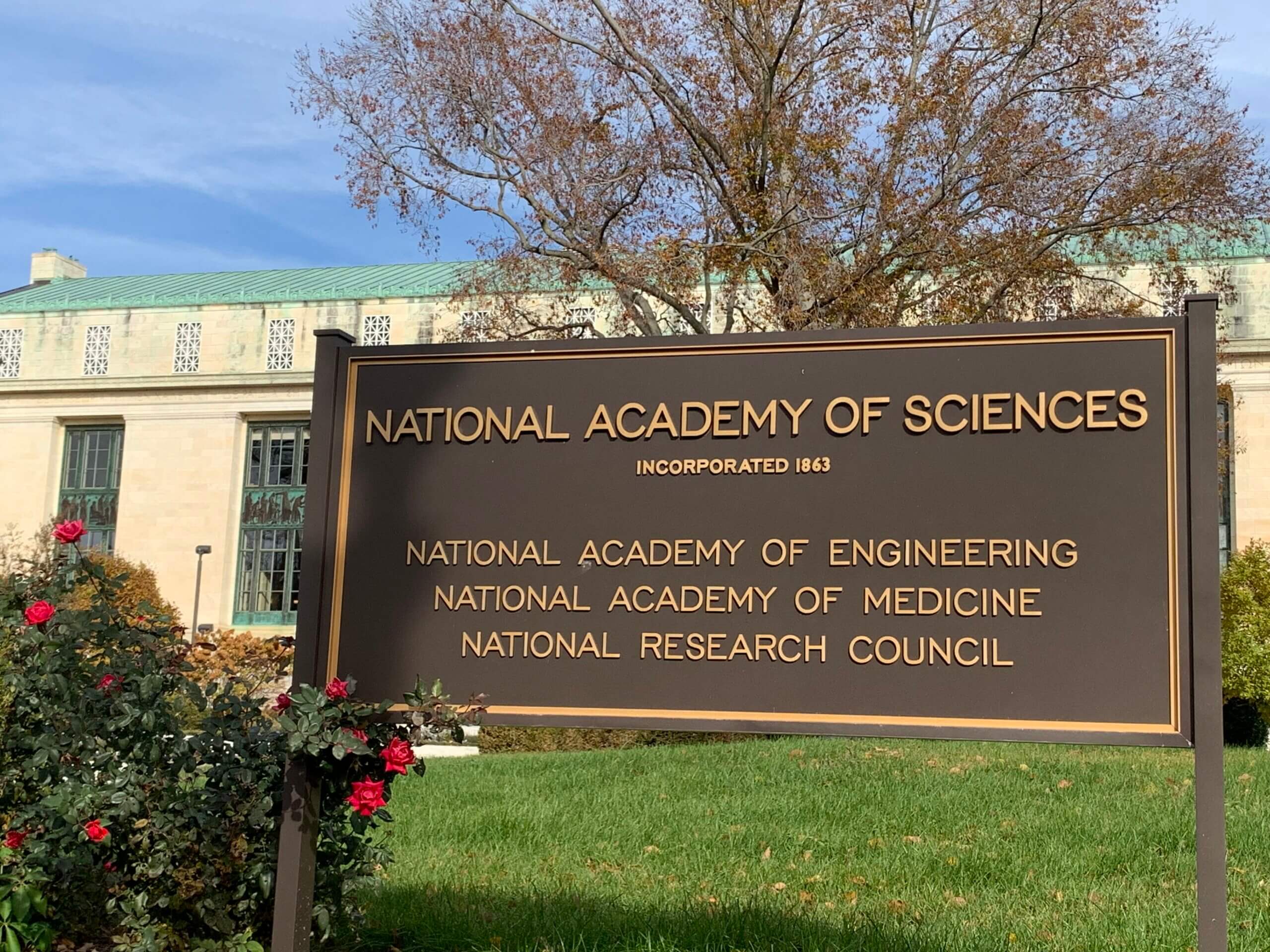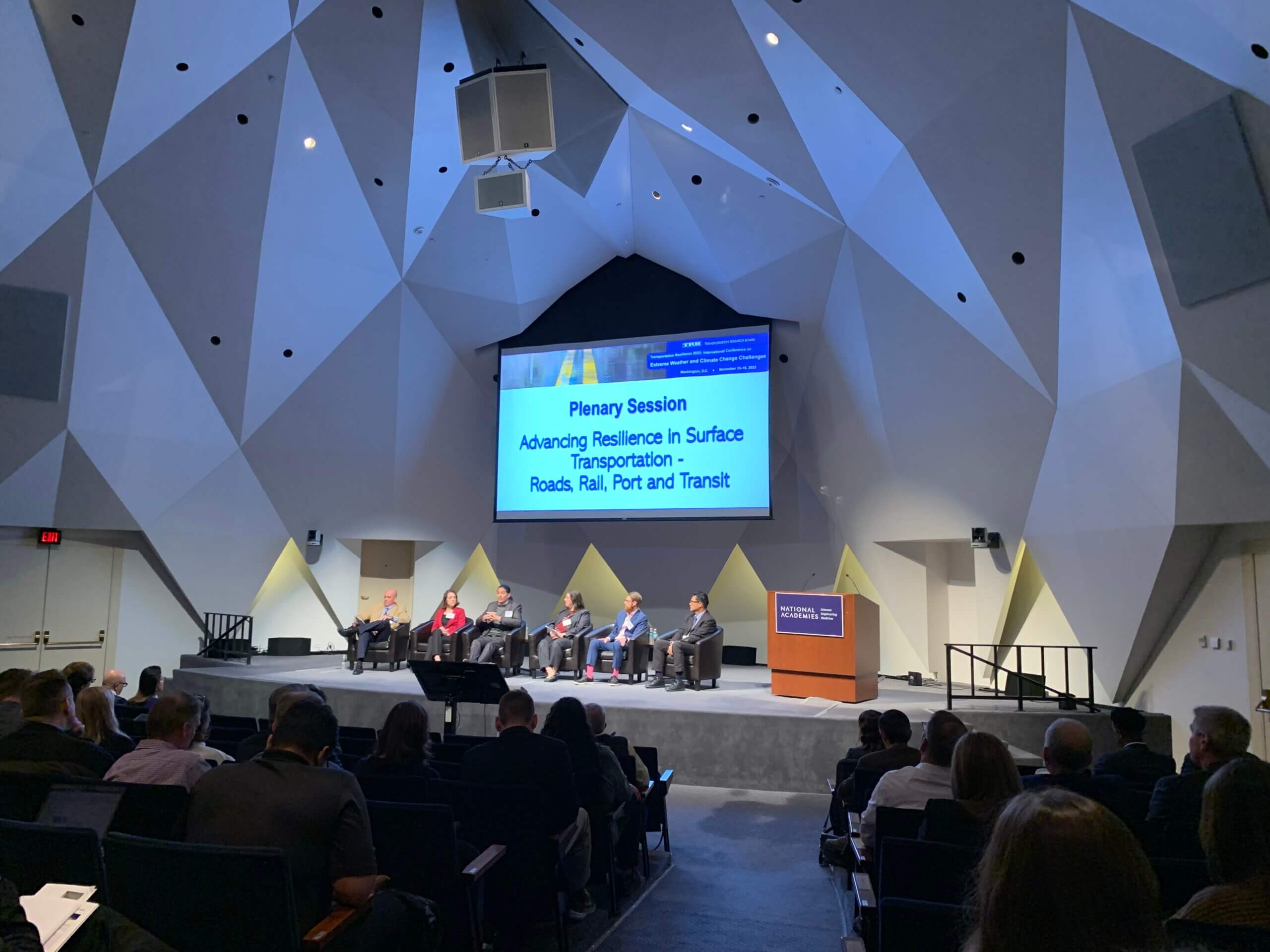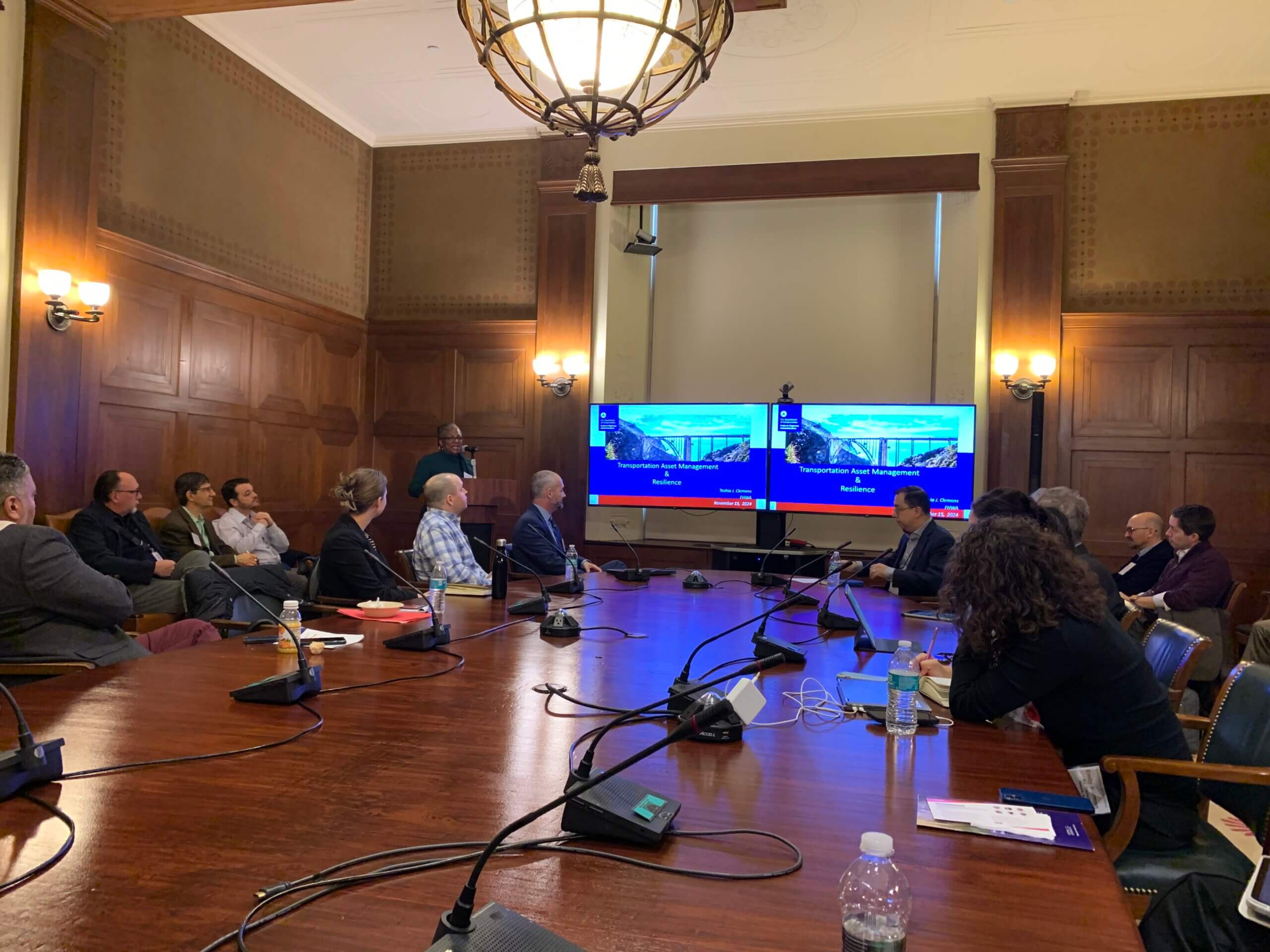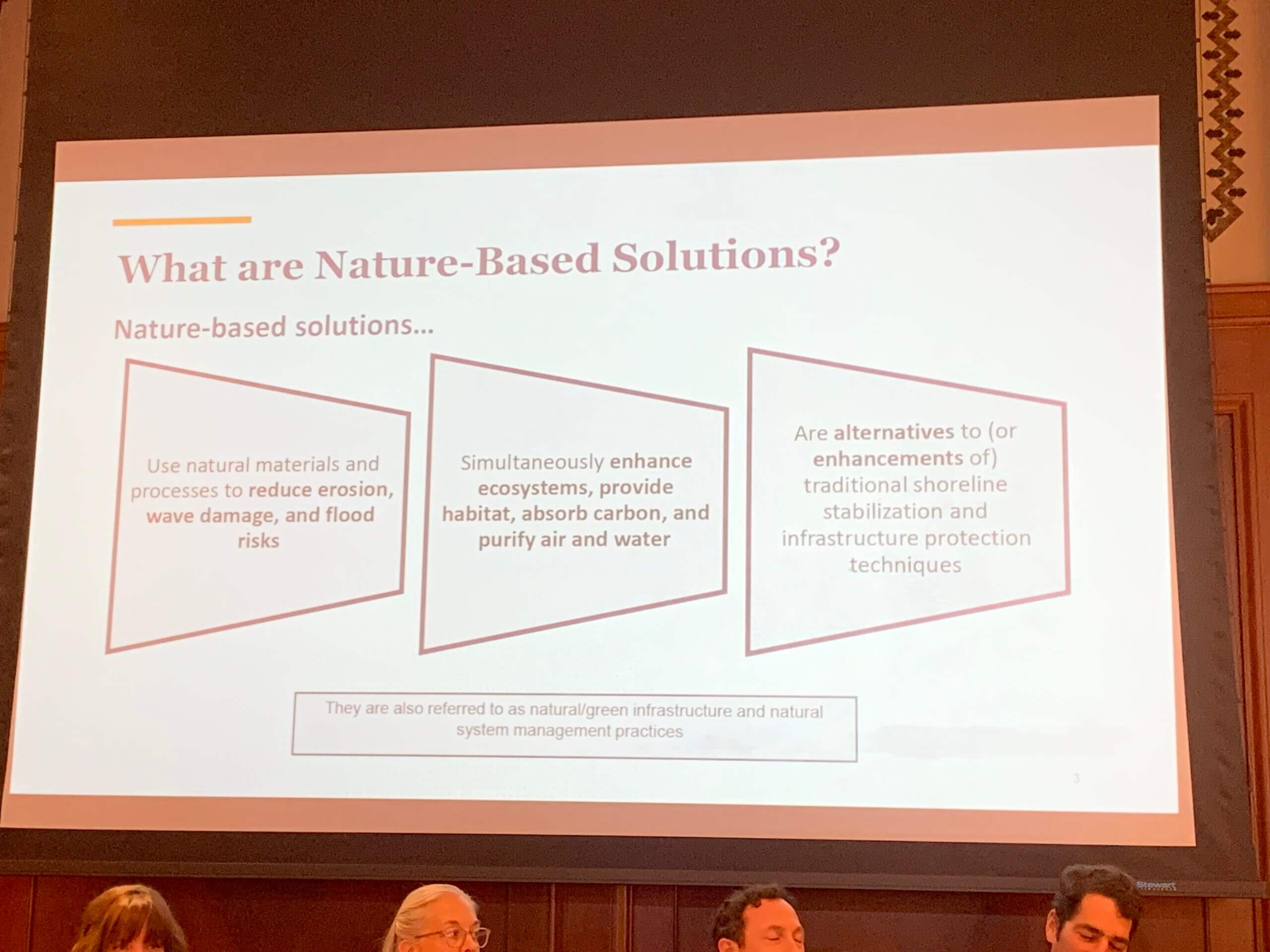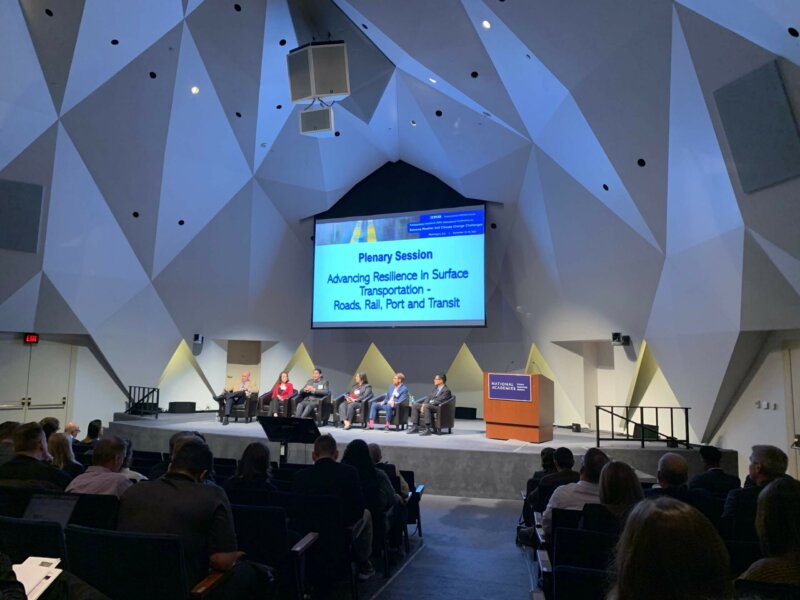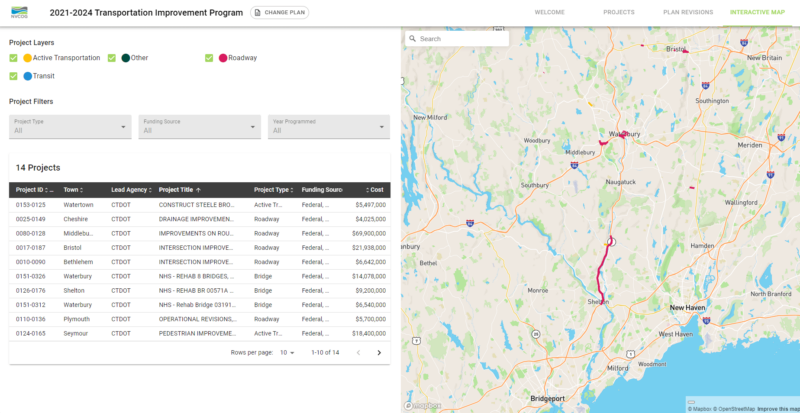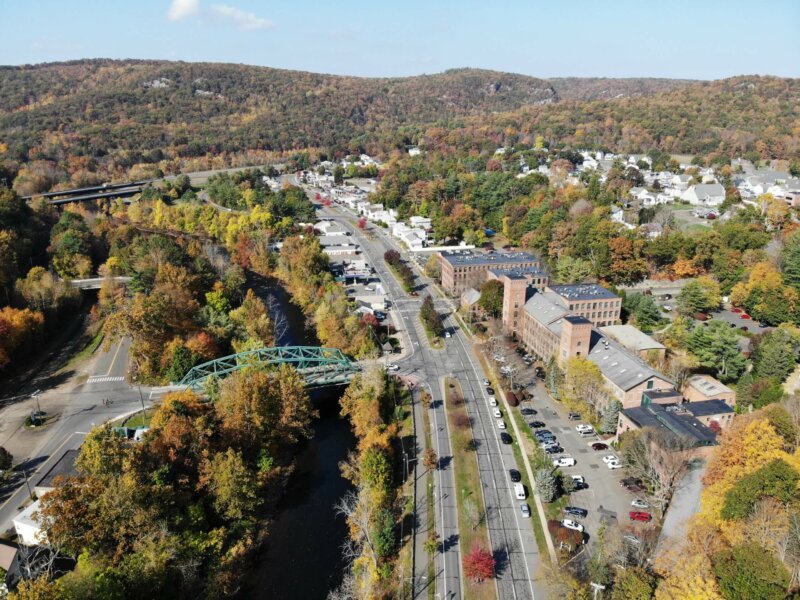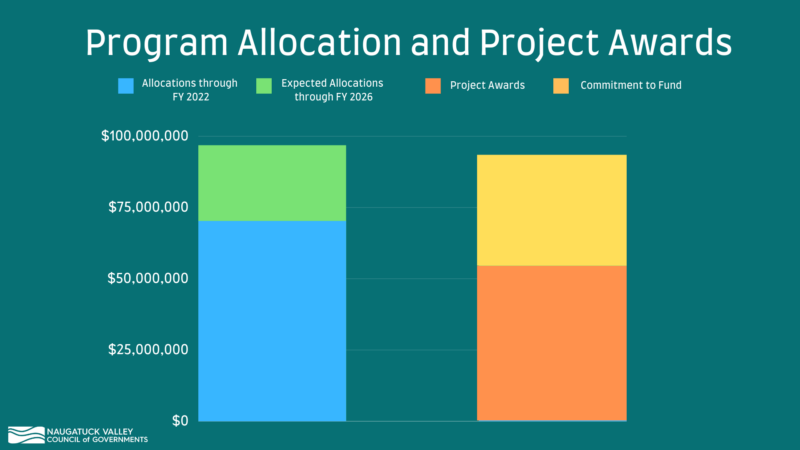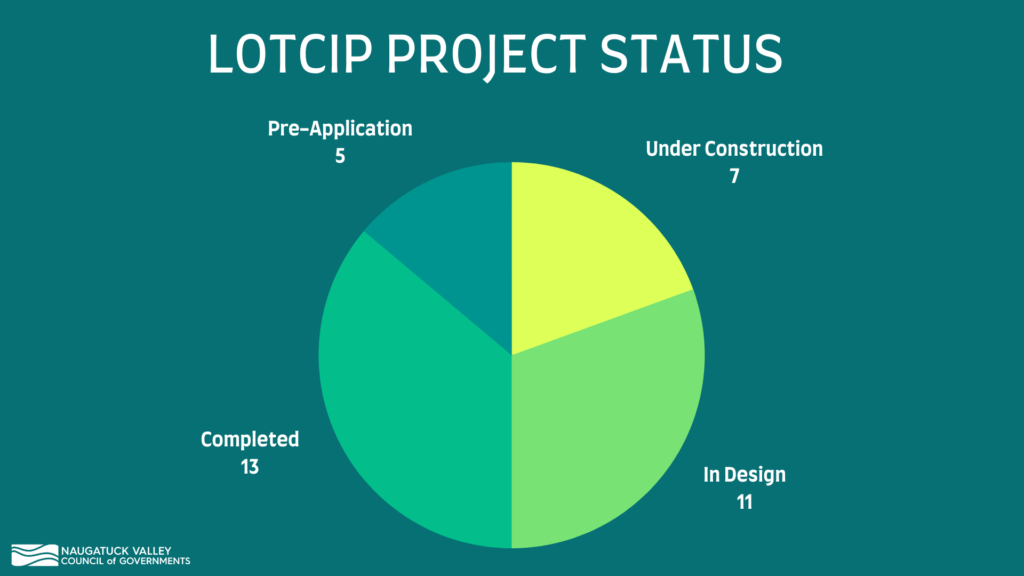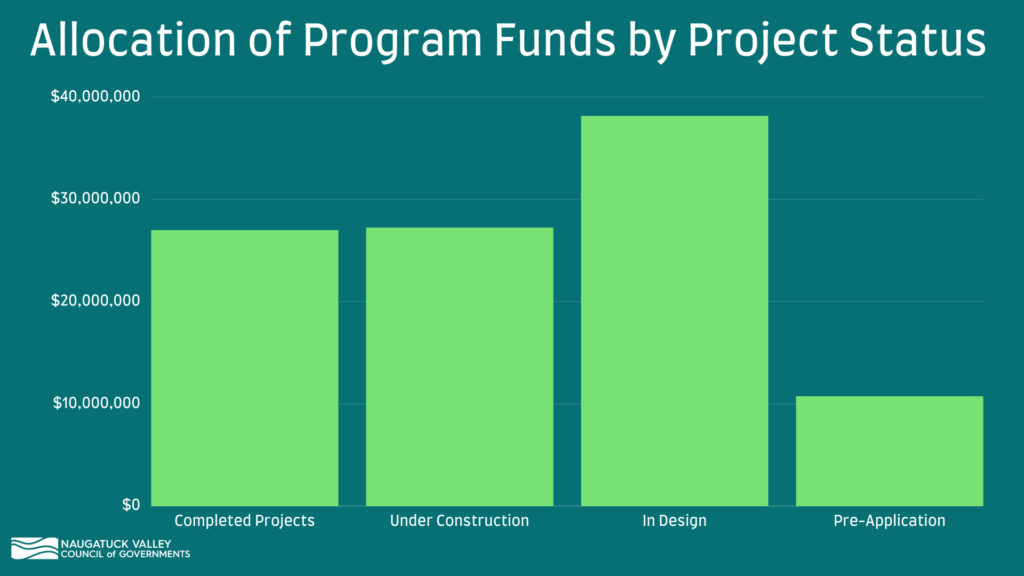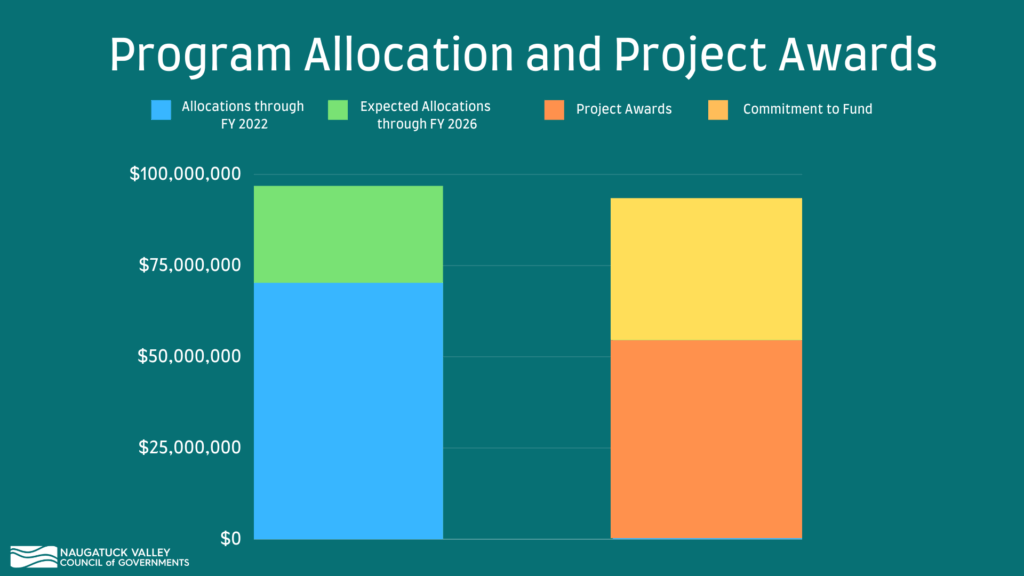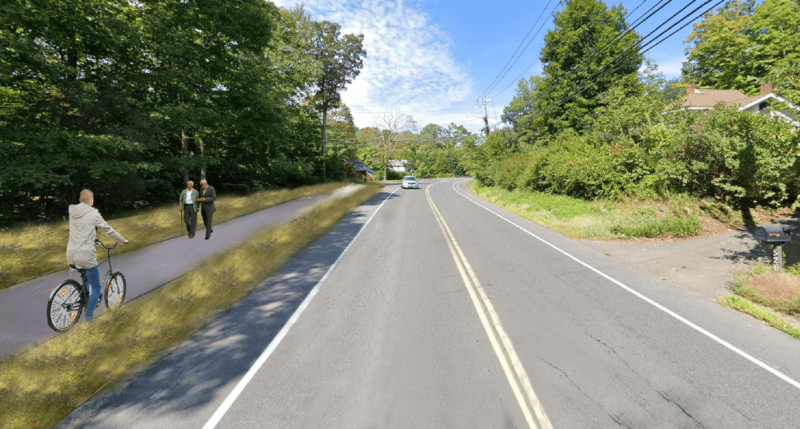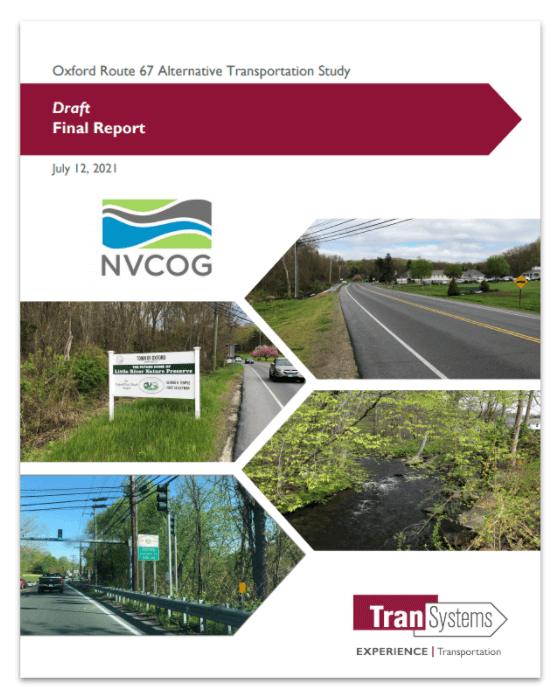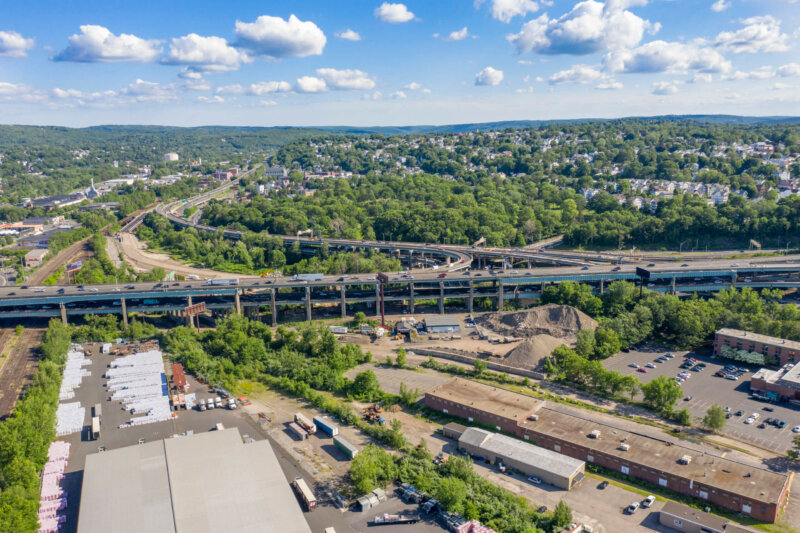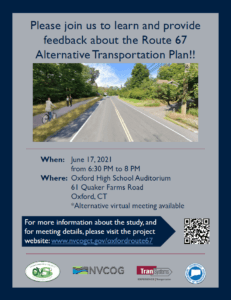 Oxford residents and business owners are invited to review and provide feedback on a Draft Oxford Route 67 Alternative Transportation Study report during a Public Information Meeting on June 17th, 2021, beginning at 6:30 p.m. in the Oxford High School auditorium. The Draft report presents the existing conditions in the corridor along with recommendations for bicycle, pedestrian, and transit improvements. Project partners will present the draft plan and be available to take comments and answer questions at the June 17 meeting. An alternative virtual broadcast of the presentation will be available for those unable to attend in person. The draft report and meeting details can be found on the study webpage at www.nvcogct.gov/oxfordroute67.
Oxford residents and business owners are invited to review and provide feedback on a Draft Oxford Route 67 Alternative Transportation Study report during a Public Information Meeting on June 17th, 2021, beginning at 6:30 p.m. in the Oxford High School auditorium. The Draft report presents the existing conditions in the corridor along with recommendations for bicycle, pedestrian, and transit improvements. Project partners will present the draft plan and be available to take comments and answer questions at the June 17 meeting. An alternative virtual broadcast of the presentation will be available for those unable to attend in person. The draft report and meeting details can be found on the study webpage at www.nvcogct.gov/oxfordroute67.
The Oxford Main Street Alternative Transportation Study has been underway since December 2019, investigating the potential for non-motorized transportation alternatives and transit in the Route 67 corridor between Seymour and Southford. Study partners collected and analyzed information about the existing conditions in the corridor, collected input from stakeholders and the public, and investigated potential bicycle, pedestrian, and transit improvements. The focus is to improve connections and transportation options to the Seymour sidewalk network, train station and Naugatuck River Greenway Trail to the south, and the Larkin Bridle Trail to the north, as well as to all the businesses, services, green spaces, and residential areas within the corridor. The potential for transit service was also investigated, focusing on connections to services and major residential and commercial centers and to surrounding communities.
The Oxford Main Street Project Committee is overseeing the project, and it builds on previous work the committee has undertaken to improve access to the Little River and natural resources along Route 67. The goal is to provide better access to the businesses and natural resources throughout the corridor. The final report will provide a cohesive plan for the entire corridor to better enable the Town to plan, prioritize, and fund future improvements. The Naugatuck Valley Council of Governments (NVCOG) is funding the project with federal transportation planning funds. TranSystems Corporation, a planning and engineering consultant with offices in Meriden, CT is the project consultant. A final report, incorporating comments from stakeholders and the public, will be published this summer.
Oxford’s Plan of Conservation and Development prioritized creating more of a downtown feel along Route 67. Unlike many of its neighbors, Oxford does not have a typical walkable New England downtown or Main Street.
Instead, municipal and commercial areas are dispersed along with residences along State Route 67. While Route 67 fundamentally functions as Oxford’s “Main Street,” it currently has no sidewalks or safe bicycle or pedestrian access. In addition, there is currently no public transit currently operated along Route 67 providing residents an alternative transportation option. Transit options by train on Metro North and by bus on CT Transit are available only one mile from the Oxford town line, but there is currently no way for Oxford residents to safely access these services without a personal motor vehicle.
Oxford First Selectman George Temple explained that “Oxford residents have voiced support for pedestrian and bicycle access along the Little River and Route 67. This study allows us to make progress toward that goal, and to give the public a chance to help guide and contribute to future efforts”.
TranSystems Project Manager Casey Hardin said that “This is the time for area residents to provide input on the planning for this important municipal resource. The study includes recommendations to improve mobility options for bicyclists and pedestrians, as well as folks who would like options beyond their automobile”.
